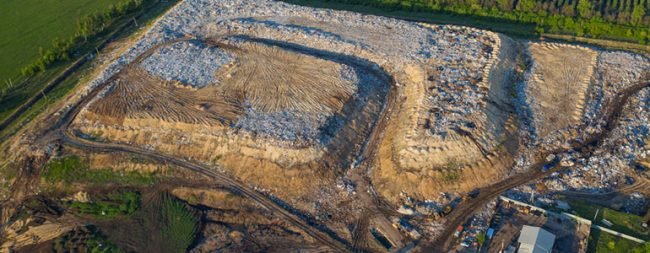Aerobic Composting vs. Anaerobic Composting
What is the difference between aerobic and anaerobic composting? Both types take advantage of decomposition - the way things naturally break down. How are these two composting systems distinct? That’s the question we’ll tackle on the blog today.
This article will help you determine the obvious composting choice for your home, restaurant, and/or office. Learning the facts puts you a step closer to doing what’s right for you, your loved ones, and your environment.
Aerobic Composting vs. Anaerobic Composting
Both composting types are human-directed. Both break down organic matter. But one does so in a way that’s more beneficial to our environment. So, what’s the main difference in compost aerobic vs. anaerobic?
What Is Aerobic Composting?
Aerobic composting requires ventilation. And it’s all about the bacteria. In aerobic composting, aerobic bacteria need oxygen. Most small-scale home composting is aerobic. It usually is stored in a bin, and it bears minimal odor. This makes it ideal for neighborhoods.
These composting systems are set up outdoors and must include air holes. Many composters have handles/cranks that you turn when you place new scraps within. Some people move the organic material around with a pitchfork. Either way, oxygen is present. The compost pile is breathing, and aerobic bacteria are growing and doing the work.
In this process, organic matter can heat up and break down quickly.
Types of Aerobic Composting
Open Pile
It’s exactly what you’re thinking. You have a pile of organic material. You must include a bulking agent for this to be successful, though. Wood chips, wood shavings, saw dust, dry leaves, or shredded landscape waste, paper, or cardboard - all serve as bulking agents.
Windrow
This aerobic composting process is used in most industrial composting facilities. Organic material is stored in long rows or piles called windrows. It’s all turned periodically with a windrow turner.
Static Pile
With this one, organic matter is stored in windrows, but it remains unturned. In other words, the piles are static, or unmoving. These piles are usually covered, and they’re aerated from beneath.
In-Vessel
This one’s easy to remember, too. It’s just like it sounds. Organic material goes into a large vessel. This allows for rotation. It also affords control over temperature, moisture, and airflow.
Vermicomposting
In this case, you compost with worms. And worms breathe through their skin and constitute an aerobic compost pile. The worms do the work for you. It’s faster this way. The odor remains low, and the overall process is cooler.
Tip: The important thing is air. Oxygen must be present, or you’re not using an aerobic method of composting. In fact, you’re hardly different from a landfill.
What Is Anaerobic Composting?
Anaerobic composting works without oxygen. Typically, this type of composting is carried out in pits or in trenches. One digs the pit, tosses the organic composting items in, and covers it all with soil. This is a slower method than aerobic composting.
This is a perfect (and by “perfect” we mean “perfectly ugly”) picture of landfills. There’s no air getting in. Pile up waste, and then cover it. Rinse and repeat.
To boot, you won’t know the process is even complete unless you dig it up. And that can be extremely stinky. So, what are the types of anaerobic composting? In short, there’s one type. And it’s a landfill.
Methane Output of Anaerobic Composting
People ask us about methane often. They say, isn’t methane an issue? Aren’t we still producing greenhouse gases even when we compost? All this organic matter is breaking down - whether in our compost heap or in the landfill, right?
It’s breaking down all right. But here’s the difference. Methane (CH4) vs. carbon dioxide (CO2). Methane holds up to 25 times more heat than carbon dioxide. Landfills are about 50/50 when it comes to these two gases.
Why does all the CH4 occur? Because it’s an anaerobic composting system. There’s little to no air involved. Your compost pile at home or in an industrial comparing facility decomposes aerobically with oxygen. Instead, you’re left with CO2.
What are the end results of aerobic composting? You make airflow possible and see more CO2 than these overwhelming amounts of CH4 and heat that contributes exponentially to global warming.
Moonshot Enables Aerobic Composting for Residents and Businesses
With Moonshot, you have the option to do better for this globe we call home. Do better for yourself and for future generations. Let’s leave this place better than we found it. We’re helping the households and companies of Texas do just that.
Our Houston home composting services use aerobic composting that helps reduce greenhouse gas emissions. And we’re making the process easier than it’s ever been.
We also offer commercial composting services for restaurants, schools, offices, hospitals, assisted living centers, and more.
Contact us online today to see if our composting solutions are available in your Houston zip code!





